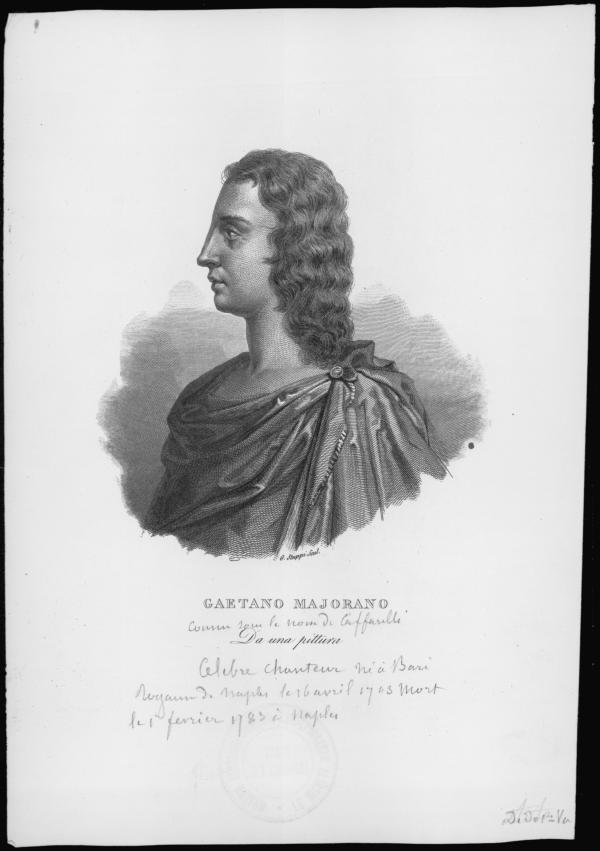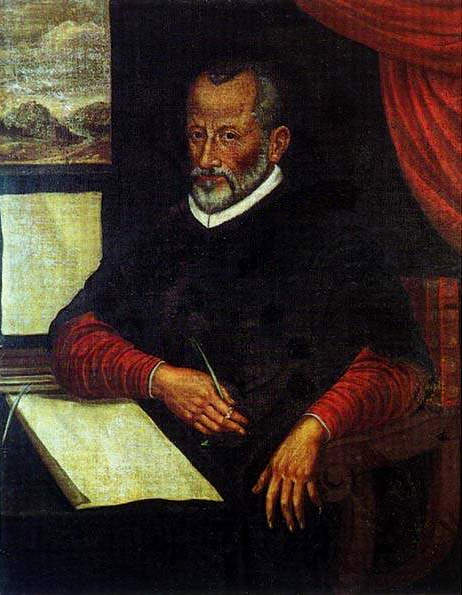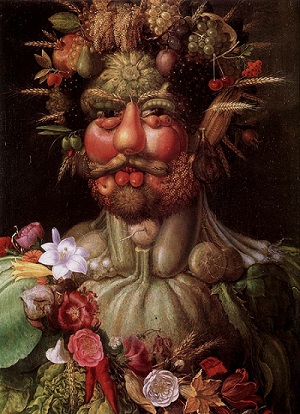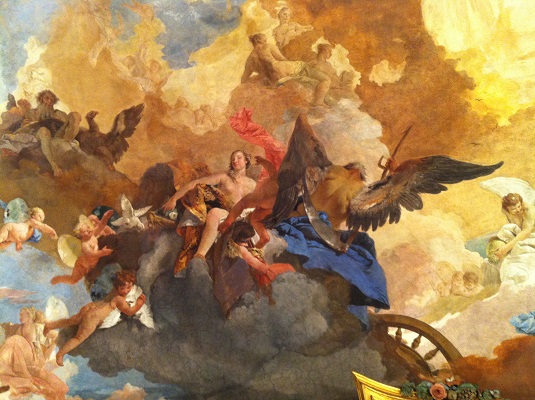
Palazzo Clerici is one of the most opulent residences of eighteenth-century Milan. Booking is required to visit its spectacular Antechamber of Mirrors (also known as the Great Gallery or Tapestry Gallery) but it is more than worth taking the visit.
The decoration of the gallery space of some 22m x 5m would alone consume a large part of the wealth of the Clerici family, containing various features of remarkable quality: wooden wainscoting by the master cabinet-maker Giuseppe Cavanna, a collection of precious tapestries and most importantly, a spectacular fresco by Giovanni Battista Tiepolo.
The Tiepolo fresco, painted in 1741, rejoices in the title of The Journey of the Sun through the Free Heavens Inhabited by the Gods of Olympus and Surrounded by the Earthly Creatures and Animals that Symbolise the Continents. As this suggests, the centre of the composition if the Chariot of the Sun, preceded through the heavens by the figure of Hermes. If you begin to examine this work at the top of the long wall as you enter the room, the first scene depicts the myth of Proserpina, who was kidnapped by Pluto, king of Hades. To the side is a group around Dionysus; in an atmosphere of post-revelry exhaustion rather than ease, the god is left to his own devices. The come the allegories of the continents: Asia is dominated by the silhouette of two camels laden with oriental merchandise; American is depicted by two figures (a Native American and a young female settler). An allegory of The Sea follows, with a corner occupied by an allegory of the arts: a putto holding an artist’s palette and an old man with a mandolin. Alongside the putto is a figure which is a self-portrait, a feature that Tiepolo often included in his paintings.
The ceiling on the opposite side of the gallery contains the allegories of Africa (a huge trunk and two tusks herald the arrival of an elephant) and Europe, where can be seen a warrior in gleaming helmet and Cuirass (perhaps Perseus) and Poseidon in the background. After this last continent, The figures in the last allegory depict various rivers: one may be the Arno and another the Tiber, but the others cannot be identified.
The magnificence of this single fresco ruined Count Antonio Giorgio Clerici, no expense being spared to make the gallery and entire house into a setting worthy of such a masterpiece.
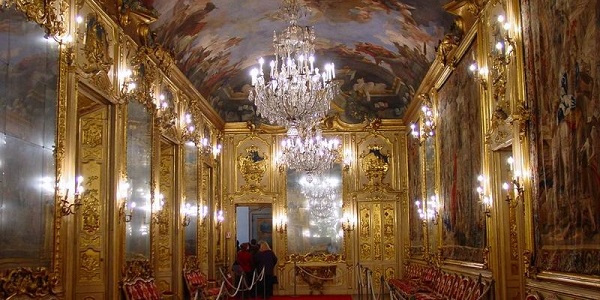
So next time you are in Milan make an appointment to visit Palazzo Clerici – the experience is extraordinary – and as it has done with me, will stay firmly in your memory.
(Adapted from Secret Milan by Massisno Polidoro)




